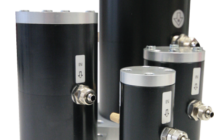In the last few decades, bacteria that are not readily treatable with standard antibiotics have become a grave public health concern. Infections with these antimicrobial resistant (AMR) bacteria have become more common and are associated with more severe illness, longer hospital stays, higher healthcare costs, and deaths. While emergence and spread of AMR bacteria is conventionally attributed to inappropriate use of antibiotics in human healthcare, antibiotic use in veterinary practice and in food production has been raised as a possible contributor to human illness.
Every so often our food producers come under fi re for what critics call a careless use of antibiotics, which is claimed to be putting lives at risk. However, the reality is that there are stringent rules in place to tightly control the use of any veterinary antibiotics from the spectrum that is used to treat human diseases. Classed as restricted veterinary medicines, such antibiotics can only be used to treat disease in a food-producing animal when prescribed by a vet.
Animals treated with antibiotics cannot be sent for slaughter until a certain period of time has elapsed. This ensures the medicine has done its job and passed out of the animal’s system. As a further safeguard, any trades of antibiotics must not exceed the set residue limit to ensure there is no food safety concern in the food. This residue limit also ensures that any antibiotic that might still be present will not be enough to contribute to the development of resistance.
Furthermore, MPI keeps a close eye on the veterinary use of these types of antibiotics. We receive yearly reports on sales data and by analysing these figures it’s evident that although sales have fluctuated from year to year from 2005-2011, they have generally remained within a predictable range. In fact, recent data have revealed that overall antibiotic sales have decreased by 18 percent between the 2009-2010 and the 2010-2011 reporting periods.
To better inform our efforts to keep down levels of AMR bacteria in the human food chain, MPI has carried out a baseline survey of antimicrobial resistance in the New Zealand food chain. The survey of freshly dressed carcasses of calves, pigs and broiler poultry in New Zealand abattoirs and processing plants was carried out over a 12 month period and focussed on Campylobacter and Salmonella, which cause illness in people.
Study results showed that antibiotic resistance in these bacteria was lower than that of the same bacteria species from human specimens and had no direct implications for human health. Furthermore, antibiotic resistance among bacteria from New Zealand pigs and poultry was either lower or not significantly different to that recorded in the internationally comparable DANMAP surveillance system in Denmark. This gives us confidence we are doing well, given Denmark is considered a world leader in this field.
However, although antibiotic use in animals may not be a significant contributor to antibiotic resistance, MPI will continue to monitor this issue and if we see any concerning developments we will adjust the regulatory controls as necessary.
Carol Barnao is a NZ FOODtechnology content partner and deputy director-general of the Ministry for Primary Industries’ Standards branch. Before this, she was NZFSA director of the Assurances and Standards Group which provided assurances that New Zealand food and related products are safe and suitable to eat. Carol has a strong background in the dairy industry. Before joining MAF 12 years ago, she was for 18 years involved in the dairy industry. She has held various positions with the New Zealand Dairy Board. She is a food technologist and a fellow of the New Zealand Institute of Food Science and Technology. If you have questions for Ms Barnao or suggestions on areas of interest in her specialist area, email editor Steve Best at [email protected], reference Carol Barnao.





























































































